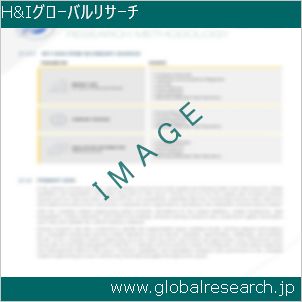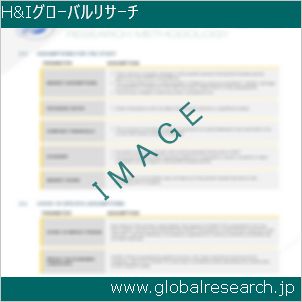1 Market Overview
1.1 ROS-based Robot Introduction
1.2 Market Analysis by Type
1.2.1 Overview: Global ROS-based Robot Revenue by Type: 2017 Versus 2021 Versus 2028
1.2.2 Professional ROS-based Robot
1.2.3 Personal/Domestic ROS-based Robot
1.3 Market Analysis by Application
1.3.1 Overview: Global ROS-based Robot Revenue by Application: 2017 Versus 2021 Versus 2028
1.3.2 Automotive
1.3.3 Electrical/Electronics
1.3.4 Metal and Machinery
1.3.5 Rubber and Plastic
1.3.6 Pharmaceuticals and Cosmetics
1.3.7 Food and Beverages
1.3.8 Others
1.4 Global ROS-based Robot Market Size & Forecast
1.4.1 Global ROS-based Robot Sales in Value (2017 & 2021 & 2028)
1.4.2 Global ROS-based Robot Sales in Volume (2017-2028)
1.4.3 Global ROS-based Robot Price (2017-2028)
1.5 Global ROS-based Robot Production Capacity Analysis
1.5.1 Global ROS-based Robot Total Production Capacity (2017-2028)
1.5.2 Global ROS-based Robot Production Capacity by Geographic Region
1.6 Market Drivers, Restraints and Trends
1.6.1 ROS-based Robot Market Drivers
1.6.2 ROS-based Robot Market Restraints
1.6.3 ROS-based Robot Trends Analysis
2 Manufacturers Profiles
2.1 ABB Ltd.
2.1.1 ABB Ltd. Details
2.1.2 ABB Ltd. Major Business
2.1.3 ABB Ltd. ROS-based Robot Product and Services
2.1.4 ABB Ltd. ROS-based Robot Sales, Price, Revenue, Gross Margin and Market Share (2019, 2020, 2021, and 2022)
2.2 Clearpath Robotics
2.2.1 Clearpath Robotics Details
2.2.2 Clearpath Robotics Major Business
2.2.3 Clearpath Robotics ROS-based Robot Product and Services
2.2.4 Clearpath Robotics ROS-based Robot Sales, Price, Revenue, Gross Margin and Market Share (2019, 2020, 2021, and 2022)
2.3 Comau SpA
2.3.1 Comau SpA Details
2.3.2 Comau SpA Major Business
2.3.3 Comau SpA ROS-based Robot Product and Services
2.3.4 Comau SpA ROS-based Robot Sales, Price, Revenue, Gross Margin and Market Share (2019, 2020, 2021, and 2022)
2.4 Denso Robotics, Inc.
2.4.1 Denso Robotics, Inc. Details
2.4.2 Denso Robotics, Inc. Major Business
2.4.3 Denso Robotics, Inc. ROS-based Robot Product and Services
2.4.4 Denso Robotics, Inc. ROS-based Robot Sales, Price, Revenue, Gross Margin and Market Share (2019, 2020, 2021, and 2022)
2.5 Fanuc Corporation
2.5.1 Fanuc Corporation Details
2.5.2 Fanuc Corporation Major Business
2.5.3 Fanuc Corporation ROS-based Robot Product and Services
2.5.4 Fanuc Corporation ROS-based Robot Sales, Price, Revenue, Gross Margin and Market Share (2019, 2020, 2021, and 2022)
2.6 Husarion, Inc.
2.6.1 Husarion, Inc. Details
2.6.2 Husarion, Inc. Major Business
2.6.3 Husarion, Inc. ROS-based Robot Product and Services
2.6.4 Husarion, Inc. ROS-based Robot Sales, Price, Revenue, Gross Margin and Market Share (2019, 2020, 2021, and 2022)
2.7 iRobot Corporation
2.7.1 iRobot Corporation Details
2.7.2 iRobot Corporation Major Business
2.7.3 iRobot Corporation ROS-based Robot Product and Services
2.7.4 iRobot Corporation ROS-based Robot Sales, Price, Revenue, Gross Margin and Market Share (2019, 2020, 2021, and 2022)
2.8 Kuka AG
2.8.1 Kuka AG Details
2.8.2 Kuka AG Major Business
2.8.3 Kuka AG ROS-based Robot Product and Services
2.8.4 Kuka AG ROS-based Robot Sales, Price, Revenue, Gross Margin and Market Share (2019, 2020, 2021, and 2022)
2.9 Nachi Robotic Systems, Inc.
2.9.1 Nachi Robotic Systems, Inc. Details
2.9.2 Nachi Robotic Systems, Inc. Major Business
2.9.3 Nachi Robotic Systems, Inc. ROS-based Robot Product and Services
2.9.4 Nachi Robotic Systems, Inc. ROS-based Robot Sales, Price, Revenue, Gross Margin and Market Share (2019, 2020, 2021, and 2022)
2.10 Omron Adept Technologies
2.10.1 Omron Adept Technologies Details
2.10.2 Omron Adept Technologies Major Business
2.10.3 Omron Adept Technologies ROS-based Robot Product and Services
2.10.4 Omron Adept Technologies ROS-based Robot Sales, Price, Revenue, Gross Margin and Market Share (2019, 2020, 2021, and 2022)
2.11 Rethink Robotics GmbH
2.11.1 Rethink Robotics GmbH Details
2.11.2 Rethink Robotics GmbH Major Business
2.11.3 Rethink Robotics GmbH ROS-based Robot Product and Services
2.11.4 Rethink Robotics GmbH ROS-based Robot Sales, Price, Revenue, Gross Margin and Market Share (2019, 2020, 2021, and 2022)
2.12 Stanley Innovation, Inc.
2.12.1 Stanley Innovation, Inc. Details
2.12.2 Stanley Innovation, Inc. Major Business
2.12.3 Stanley Innovation, Inc. ROS-based Robot Product and Services
2.12.4 Stanley Innovation, Inc. ROS-based Robot Sales, Price, Revenue, Gross Margin and Market Share (2019, 2020, 2021, and 2022)
2.13 Staubli International AG
2.13.1 Staubli International AG Details
2.13.2 Staubli International AG Major Business
2.13.3 Staubli International AG ROS-based Robot Product and Services
2.13.4 Staubli International AG ROS-based Robot Sales, Price, Revenue, Gross Margin and Market Share (2019, 2020, 2021, and 2022)
2.14 Yaskawa Motoman
2.14.1 Yaskawa Motoman Details
2.14.2 Yaskawa Motoman Major Business
2.14.3 Yaskawa Motoman ROS-based Robot Product and Services
2.14.4 Yaskawa Motoman ROS-based Robot Sales, Price, Revenue, Gross Margin and Market Share (2019, 2020, 2021, and 2022)
2.15 YRG, Inc.
2.15.1 YRG, Inc. Details
2.15.2 YRG, Inc. Major Business
2.15.3 YRG, Inc. ROS-based Robot Product and Services
2.15.4 YRG, Inc. ROS-based Robot Sales, Price, Revenue, Gross Margin and Market Share (2019, 2020, 2021, and 2022)
3 ROS-based Robot Breakdown Data by Manufacturer
3.1 Global ROS-based Robot Sales in Volume by Manufacturer (2019, 2020, 2021, and 2022)
3.2 Global ROS-based Robot Revenue by Manufacturer (2019, 2020, 2021, and 2022)
3.3 Key Manufacturer Market Position in ROS-based Robot
3.4 Market Concentration Rate
3.4.1 Top 3 ROS-based Robot Manufacturer Market Share in 2021
3.4.2 Top 6 ROS-based Robot Manufacturer Market Share in 2021
3.5 Global ROS-based Robot Production Capacity by Company: 2021 VS 2022
3.6 Manufacturer by Geography: Head Office and ROS-based Robot Production Site
3.7 New Entrant and Capacity Expansion Plans
3.8 Mergers & Acquisitions
4 Market Analysis by Region
4.1 Global ROS-based Robot Market Size by Region
4.1.1 Global ROS-based Robot Sales in Volume by Region (2017-2028)
4.1.2 Global ROS-based Robot Revenue by Region (2017-2028)
4.2 North America ROS-based Robot Revenue (2017-2028)
4.3 Europe ROS-based Robot Revenue (2017-2028)
4.4 Asia-Pacific ROS-based Robot Revenue (2017-2028)
4.5 South America ROS-based Robot Revenue (2017-2028)
4.6 Middle East and Africa ROS-based Robot Revenue (2017-2028)
5 Market Segment by Type
5.1 Global ROS-based Robot Sales in Volume by Type (2017-2028)
5.2 Global ROS-based Robot Revenue by Type (2017-2028)
5.3 Global ROS-based Robot Price by Type (2017-2028)
6 Market Segment by Application
6.1 Global ROS-based Robot Sales in Volume by Application (2017-2028)
6.2 Global ROS-based Robot Revenue by Application (2017-2028)
6.3 Global ROS-based Robot Price by Application (2017-2028)
7 North America by Country, by Type, and by Application
7.1 North America ROS-based Robot Sales by Type (2017-2028)
7.2 North America ROS-based Robot Sales by Application (2017-2028)
7.3 North America ROS-based Robot Market Size by Country
7.3.1 North America ROS-based Robot Sales in Volume by Country (2017-2028)
7.3.2 North America ROS-based Robot Revenue by Country (2017-2028)
7.3.3 United States Market Size and Forecast (2017-2028)
7.3.4 Canada Market Size and Forecast (2017-2028)
7.3.5 Mexico Market Size and Forecast (2017-2028)
8 Europe by Country, by Type, and by Application
8.1 Europe ROS-based Robot Sales by Type (2017-2028)
8.2 Europe ROS-based Robot Sales by Application (2017-2028)
8.3 Europe ROS-based Robot Market Size by Country
8.3.1 Europe ROS-based Robot Sales in Volume by Country (2017-2028)
8.3.2 Europe ROS-based Robot Revenue by Country (2017-2028)
8.3.3 Germany Market Size and Forecast (2017-2028)
8.3.4 France Market Size and Forecast (2017-2028)
8.3.5 United Kingdom Market Size and Forecast (2017-2028)
8.3.6 Russia Market Size and Forecast (2017-2028)
8.3.7 Italy Market Size and Forecast (2017-2028)
9 Asia-Pacific by Region, by Type, and by Application
9.1 Asia-Pacific ROS-based Robot Sales by Type (2017-2028)
9.2 Asia-Pacific ROS-based Robot Sales by Application (2017-2028)
9.3 Asia-Pacific ROS-based Robot Market Size by Region
9.3.1 Asia-Pacific ROS-based Robot Sales in Volume by Region (2017-2028)
9.3.2 Asia-Pacific ROS-based Robot Revenue by Region (2017-2028)
9.3.3 China Market Size and Forecast (2017-2028)
9.3.4 Japan Market Size and Forecast (2017-2028)
9.3.5 Korea Market Size and Forecast (2017-2028)
9.3.6 India Market Size and Forecast (2017-2028)
9.3.7 Southeast Asia Market Size and Forecast (2017-2028)
9.3.8 Australia Market Size and Forecast (2017-2028)
10 South America by Region, by Type, and by Application
10.1 South America ROS-based Robot Sales by Type (2017-2028)
10.2 South America ROS-based Robot Sales by Application (2017-2028)
10.3 South America ROS-based Robot Market Size by Country
10.3.1 South America ROS-based Robot Sales in Volume by Country (2017-2028)
10.3.2 South America ROS-based Robot Revenue by Country (2017-2028)
10.3.3 Brazil Market Size and Forecast (2017-2028)
10.3.4 Argentina Market Size and Forecast (2017-2028)
11 Middle East & Africa by Country, by Type, and by Application
11.1 Middle East & Africa ROS-based Robot Sales by Type (2017-2028)
11.2 Middle East & Africa ROS-based Robot Sales by Application (2017-2028)
11.3 Middle East & Africa ROS-based Robot Market Size by Country
11.3.1 Middle East & Africa ROS-based Robot Sales in Volume by Country (2017-2028)
11.3.2 Middle East & Africa ROS-based Robot Revenue by Country (2017-2028)
11.3.3 Turkey Market Size and Forecast (2017-2028)
11.3.4 Egypt Market Size and Forecast (2017-2028)
11.3.5 Saudi Arabia Market Size and Forecast (2017-2028)
11.3.6 South Africa Market Size and Forecast (2017-2028)
12 Raw Material and Industry Chain
12.1 Raw Material of ROS-based Robot and Key Manufacturers
12.2 Manufacturing Costs Percentage of ROS-based Robot
12.3 ROS-based Robot Production Process
12.4 ROS-based Robot Industrial Chain
13 Sales Channel, Distributors, Traders and Dealers
13.1 Sales Channel
13.1.1 Direct Marketing
13.1.2 Indirect Marketing
13.2 ROS-based Robot Typical Distributors
13.3 ROS-based Robot Typical Customers
14 Research Findings and Conclusion
15 Appendix
15.1 Methodology
15.2 Research Process and Data Source
15.3 Disclaimer
❖ 免責事項 ❖
http://www.globalresearch.jp/disclaimer


